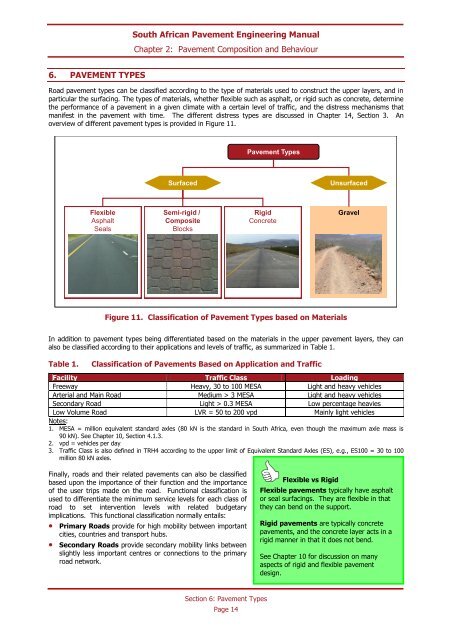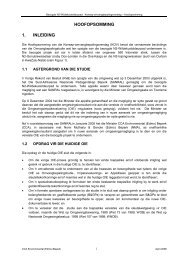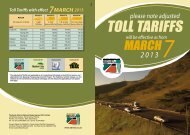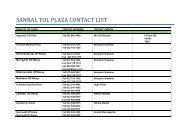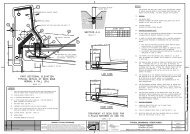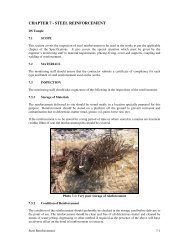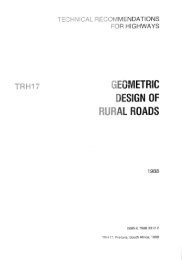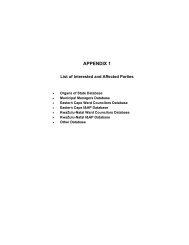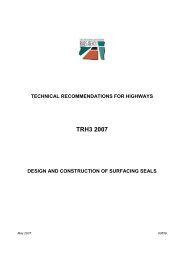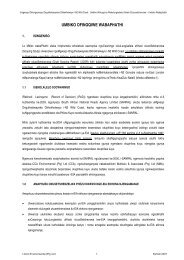SAPEM Chapter 2 - Sanral
SAPEM Chapter 2 - Sanral
SAPEM Chapter 2 - Sanral
You also want an ePaper? Increase the reach of your titles
YUMPU automatically turns print PDFs into web optimized ePapers that Google loves.
South African Pavement Engineering Manual<br />
<strong>Chapter</strong> 2: Pavement Composition and Behaviour<br />
6. PAVEMENT TYPES<br />
Road pavement types can be classified according to the type of materials used to construct the upper layers, and in<br />
particular the surfacing. The types of materials, whether flexible such as asphalt, or rigid such as concrete, determine<br />
the performance of a pavement in a given climate with a certain level of traffic, and the distress mechanisms that<br />
manifest in the pavement with time. The different distress types are discussed in <strong>Chapter</strong> 14, Section 3. An<br />
overview of different pavement types is provided in Figure 11.<br />
Pavement Types<br />
Surfaced<br />
Unsurfaced<br />
Flexible<br />
Asphalt<br />
Seals<br />
Semi-rigid /<br />
Composite<br />
Blocks<br />
Rigid<br />
Concrete<br />
Gravel<br />
Need pic<br />
Figure 11. Classification of Pavement Types based on Materials<br />
In addition to pavement types being differentiated based on the materials in the upper pavement layers, they can<br />
also be classified according to their applications and levels of traffic, as summarized in Table 1.<br />
Table 1.<br />
Classification of Pavements Based on Application and Traffic<br />
Facility Traffic Class Loading<br />
Freeway Heavy, 30 to 100 MESA Light and heavy vehicles<br />
Arterial and Main Road Medium > 3 MESA Light and heavy vehicles<br />
Secondary Road Light > 0.3 MESA Low percentage heavies<br />
Low Volume Road LVR = 50 to 200 vpd Mainly light vehicles<br />
Notes:<br />
1. MESA = million equivalent standard axles (80 kN is the standard in South Africa, even though the maximum axle mass is<br />
90 kN). See <strong>Chapter</strong> 10, Section 4.1.3.<br />
2. vpd = vehicles per day<br />
3. Traffic Class is also defined in TRH4 according to the upper limit of Equivalent Standard Axles (ES), e.g., ES100 = 30 to 100<br />
million 80 kN axles.<br />
Finally, roads and their related pavements can also be classified<br />
based upon the importance of their function and the importance<br />
of the user trips made on the road. Functional classification is<br />
used to differentiate the minimum service levels for each class of<br />
road to set intervention levels with related budgetary<br />
implications. This functional classification normally entails:<br />
Primary Roads provide for high mobility between important<br />
cities, countries and transport hubs.<br />
Secondary Roads provide secondary mobility links between<br />
slightly less important centres or connections to the primary<br />
road network.<br />
Flexible vs Rigid<br />
Flexible pavements typically have asphalt<br />
or seal surfacings. They are flexible in that<br />
they can bend on the support.<br />
Rigid pavements are typically concrete<br />
pavements, and the concrete layer acts in a<br />
rigid manner in that it does not bend.<br />
See <strong>Chapter</strong> 10 for discussion on many<br />
aspects of rigid and flexible pavement<br />
design.<br />
Section 6: Pavement Types<br />
Page 14


